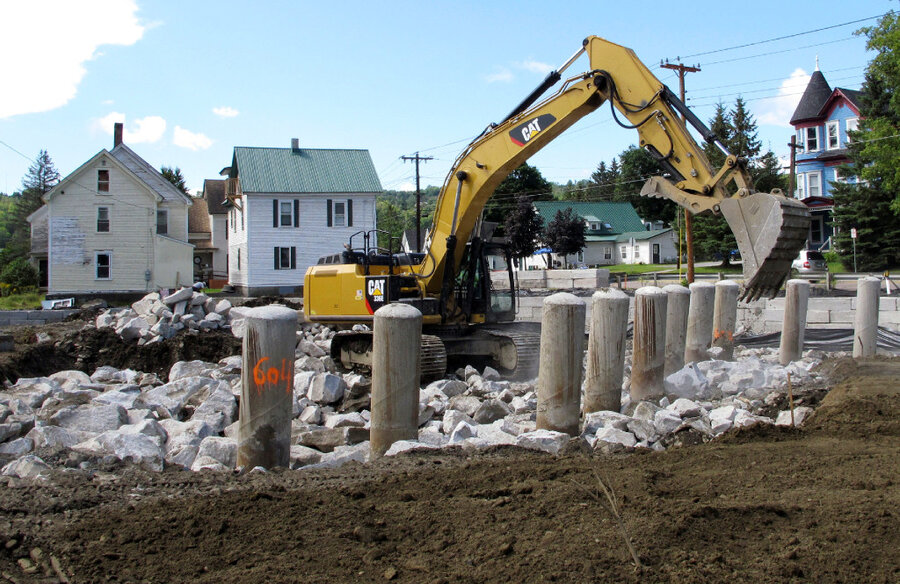How one hurricane left a lesson in gratitude
Loading...
When hurricane Irene raced up the East Coast six years ago, the storm delivered its biggest punch to the tiny state of Vermont. Floods destroyed more than 1,000 homes, 500 miles of roads, and 200 bridges. It was the state’s worst disaster since 1927. Much of the repair work is now complete. Yet the Green Mountain State still keeps alive one special experience. Many residents have used the Aug. 28 anniversary to celebrate – and expand – both the community spirit that brought them together and the resilience for recovery and rejuvenation.
For Americans hunkered down for hurricane Irma, Vermont’s post-Irene commemorations and celebrations provide an opportunity in practical gratitude for the redemptive value of social kindness during a disaster.
In Vermont’s White River Valley, for example, a recent “resilience festival” offered food, fun, a 5K run, tree planting, and new ways for people to volunteer in the community. People that play together will bounce back better from adversity, organizers said. The town of Bethel now holds an annual “pop-up university” in which local people can teach courses. The aim is to create a more vibrant and connected community. And the state government still sells license plates that read “Vermont Strong.”
Other places have learned to reinforce qualities of character needed during a tragedy. In the rebuilding of lower Manhattan after 9/11, New York highlighted the heroic efforts of first responders. For the 10th anniversary of hurricane Katrina in 2015, New Orleans sponsored a “resilience festival” that included brass bands, dancing, singing, and plenty of official thank-yous for the thousands of volunteers who helped the city recover.
Almost every disaster offers a learning curve, usually for government in ensuring better preparation in physical infrastructure and emergency response. After the devastation of hurricane Andrew in 1992, for example, Florida vastly improved its ability to respond to storm damage and in warning residents when to evacuate. Yet often overlooked is the need to build a community’s togetherness, or the social capital that comes in handy during a major crisis.
Government cannot be the only responder. For Vermont’s 2016 commemoration of its post-Irene experience, then-Gov. Peter Shumlin said it took “endless people” with goodwill to rebuild the state and leave it in better shape. To get through a disaster, communities must have a pre-positioned social web of empathy. And one way to nurture that web is to celebrate, out of gratitude, the empathy already expressed during a previous crisis.







